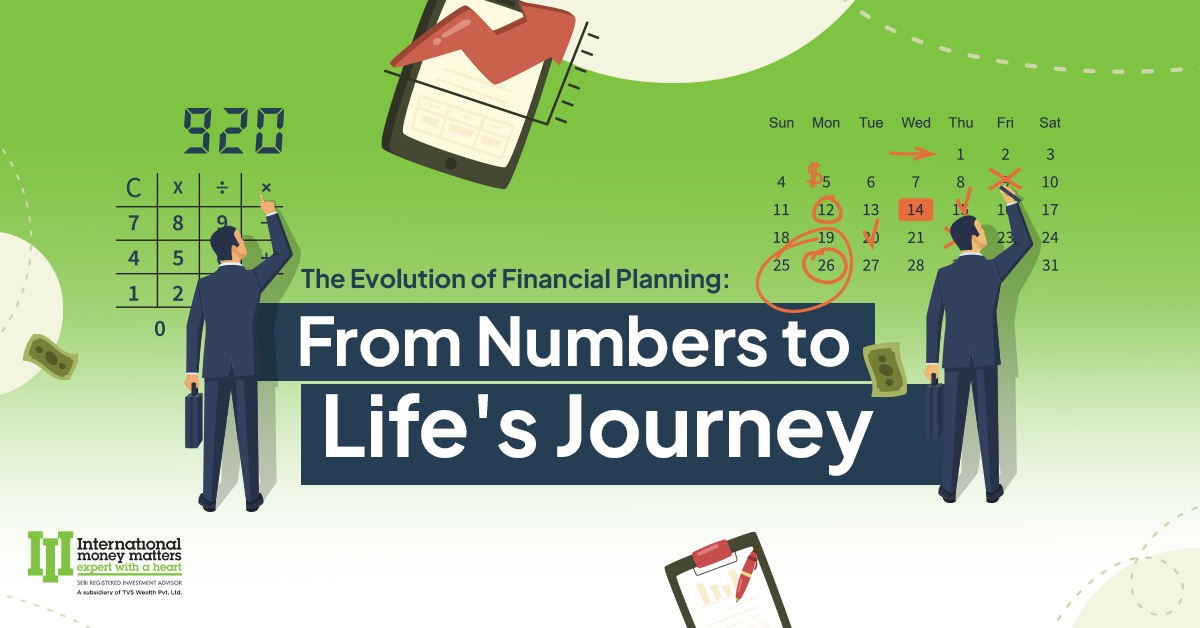SHARE
We all look forward to a comfortable retirement and are always reminded of the importance of planning for it from the moment you take up your first job. The importance of starting to plan for retirement so early is because this provides you ample time to work towards the substantial corpus you will need to amass. While there are many tools you will harness, investing in the National Pension Scheme (NPS) is something that you should think about; alongside other more common options like opening a Public Provident Fund (PPF) account. One of the pressing reasons to consider making NPS contributions is the tax benefits offered.
What is NPS?
National Pension Scheme (NPS) is a government-sponsored saving scheme, regulated by the Pension Fund Regulatory and Development Authority (PFRDA). It was first introduced in 2004 for government employees and subsequently became open to the general population in 2009. Signing up for NPS is extremely simple and can be done online as well. Any Indian citizen between the ages of 18 and 60 can make contributions towards the NPS, with monthly payments starting at a minimum of INR 500.
What are the withdrawal rules connected to NPS?
Withdrawal on reaching the age of 60 – A person on maturity at the age of 60 would be able to withdraw up to 60% of the corpus without payment of tax. The balance 40% of the corpus would have to be compulsorily used to buy an annuity plan. The annuity received is taxable in the year of receipt.
Premature Withdrawal- Subscribers who opt to exit early have to use 80% of the accumulated corpus to buy an annuity and withdraw the balance as lump-sum. The amount withdrawn will not be taxable.
Partial Withdrawal – Partial withdrawal is allowed for expenses towards higher education/marriage of children, purchase/construction of residential house (in specified conditions) and treatment of critical illnesses. The maximum allowed limit for partial withdrawal is 25% of the contributions made by the subscriber as on the date of application for withdrawal. The NPS subscribers can make a partial withdrawal after three years from the date of joining the system under specific circumstances. These partial withdrawals are completely tax-free.
What are the tax benefits of NPS?
Apart from helping you save towards your retirement effectively, contributions towards the NPS also come with certain tax benefits that can make your financial planning more efficient. The tax benefits of NPS come under section 80CCD of the income tax act.
- Benefits under section 80CCD (1): Under section 80CCD (1) an individual can claim tax benefit on self contributions towards NPS of up to INR 1.5 lakh in a financial year. This is applicable on investments made towards your compulsory tier 1 account. The benefit under Section 80CCD (1) is made available to salaried professionals and non-salaried individuals as well. Furthermore, the amount can be claimed as deduction from gross total income before tax, which in turn reduces your overall tax liability.
- Benefits under section 80CCD (1b): Apart from the deductions made available under section 80 CCD (1), individuals can claim an additional tax benefit of investments up to INR 50,000 made in the NPS scheme. Similar to the previous scenario, this deduction can be claimed by both salaried professionals and non-salaried individuals. So in that case, you can claim an overall tax benefit of up to INR 2 lakh; ie. INR 1.5 lakh under section 80CCD (1) and INR 50,000 under section 80CCD (1b).
- Benefits under section 80CCD (2): Finally, if you are a salaried employee, a tax benefit is also provided on your employer’s contribution as a deduction under section 80CCD (2). This is calculated over and above the benefits, you may claim under 80CCD (1) and 80CCD (1b). While there is no limit on how much an employer can contribute towards their employee’s NPS account, the maximum deduction allowed under this section cannot be more than 10% of your annual salary earned during that year. Here it must be remembered that all perquisites are excluded, and your salary encompasses only your basic pay and dearness allowance.
It is important to keep certain points in mind regarding NPS in the old vs new tax regime. (An individual has an option to choose to pay tax through the old tax regime or switch to the newly introduced income tax structure introduced in the Budget 2020.) –
- Employer contribution towards NPS up to 10% of salary (Basic Pay + Dearness Allowance) is eligible for deduction under Section 80 CCD (2) under both the tax structures. Central government employees enjoy a higher limit of 14% of the salary. For others, the limit is 10%.
- Deductions under Section 80 C (up to Rs. 1.5 Lakhs) and Section 80 CCD 1B (additional deduction of Rs. 50,000) cannot be claimed under the new tax regime.
Investing in NPS is a good option to consider when undertaking retirement planning. However since retirement planning can be tricky, you should decide how much to contribute and choose your allocation strategy for your NPS fund in consultation with your financial advisor.
Start your personal wealth journey with us today!

Plan to Maximize Your Retirement Years
October 4, 20180 Comments
Leave a Reply
- 2019
- 2020
- Awards
- Banking
- Budget
- Cashflow Management
- CORPORATE
- Corporate Wellness
- Couple
- Cross Border Financial Planning
- Dreams
- FAQ
- FINANCE
- Financial Goal
- Financial Planning
- FINANCIAL TRANSITIONS
- FINANCIAL WELLNESS
- Goals
- Holidaying
- Housing
- Insurance
- Investment
- Market
- Money
- Mutual Funds
- NRI
- Portfolio
- Real Estate
- Retirement
- Risk Management
- Rupee
- Succession Plan
- Tax Planning
- Tax Return
- Technology
- Wealth Management
- Women
Categories
We all look forward to a comfortable retirement and are always reminded of the importance of planning for it from the moment you take up your first job. The importance of starting to plan for retirement so early is because this provides you ample time to work towards the substantial corpus you will need to amass. While there are many tools you will harness, investing in the National Pension Scheme (NPS) is something that you should think about; alongside other more common options like opening a Public Provident Fund (PPF) account. One of the pressing reasons to consider making NPS contributions is the tax benefits offered.
What is NPS?
National Pension Scheme (NPS) is a government-sponsored saving scheme, regulated by the Pension Fund Regulatory and Development Authority (PFRDA). It was first introduced in 2004 for government employees and subsequently became open to the general population in 2009. Signing up for NPS is extremely simple and can be done online as well. Any Indian citizen between the ages of 18 and 60 can make contributions towards the NPS, with monthly payments starting at a minimum of INR 500.
What are the withdrawal rules connected to NPS?
Withdrawal on reaching the age of 60 – A person on maturity at the age of 60 would be able to withdraw up to 60% of the corpus without payment of tax. The balance 40% of the corpus would have to be compulsorily used to buy an annuity plan. The annuity received is taxable in the year of receipt.
Premature Withdrawal- Subscribers who opt to exit early have to use 80% of the accumulated corpus to buy an annuity and withdraw the balance as lump-sum. The amount withdrawn will not be taxable.
Partial Withdrawal – Partial withdrawal is allowed for expenses towards higher education/marriage of children, purchase/construction of residential house (in specified conditions) and treatment of critical illnesses. The maximum allowed limit for partial withdrawal is 25% of the contributions made by the subscriber as on the date of application for withdrawal. The NPS subscribers can make a partial withdrawal after three years from the date of joining the system under specific circumstances. These partial withdrawals are completely tax-free.
What are the tax benefits of NPS?
Apart from helping you save towards your retirement effectively, contributions towards the NPS also come with certain tax benefits that can make your financial planning more efficient. The tax benefits of NPS come under section 80CCD of the income tax act.
- Benefits under section 80CCD (1): Under section 80CCD (1) an individual can claim tax benefit on self contributions towards NPS of up to INR 1.5 lakh in a financial year. This is applicable on investments made towards your compulsory tier 1 account. The benefit under Section 80CCD (1) is made available to salaried professionals and non-salaried individuals as well. Furthermore, the amount can be claimed as deduction from gross total income before tax, which in turn reduces your overall tax liability.
- Benefits under section 80CCD (1b): Apart from the deductions made available under section 80 CCD (1), individuals can claim an additional tax benefit of investments up to INR 50,000 made in the NPS scheme. Similar to the previous scenario, this deduction can be claimed by both salaried professionals and non-salaried individuals. So in that case, you can claim an overall tax benefit of up to INR 2 lakh; ie. INR 1.5 lakh under section 80CCD (1) and INR 50,000 under section 80CCD (1b).
- Benefits under section 80CCD (2): Finally, if you are a salaried employee, a tax benefit is also provided on your employer’s contribution as a deduction under section 80CCD (2). This is calculated over and above the benefits, you may claim under 80CCD (1) and 80CCD (1b). While there is no limit on how much an employer can contribute towards their employee’s NPS account, the maximum deduction allowed under this section cannot be more than 10% of your annual salary earned during that year. Here it must be remembered that all perquisites are excluded, and your salary encompasses only your basic pay and dearness allowance.
It is important to keep certain points in mind regarding NPS in the old vs new tax regime. (An individual has an option to choose to pay tax through the old tax regime or switch to the newly introduced income tax structure introduced in the Budget 2020.) –
- Employer contribution towards NPS up to 10% of salary (Basic Pay + Dearness Allowance) is eligible for deduction under Section 80 CCD (2) under both the tax structures. Central government employees enjoy a higher limit of 14% of the salary. For others, the limit is 10%.
- Deductions under Section 80 C (up to Rs. 1.5 Lakhs) and Section 80 CCD 1B (additional deduction of Rs. 50,000) cannot be claimed under the new tax regime.
Investing in NPS is a good option to consider when undertaking retirement planning. However since retirement planning can be tricky, you should decide how much to contribute and choose your allocation strategy for your NPS fund in consultation with your financial advisor.
Start your personal wealth journey with us today!
0 Comments












0 Comments